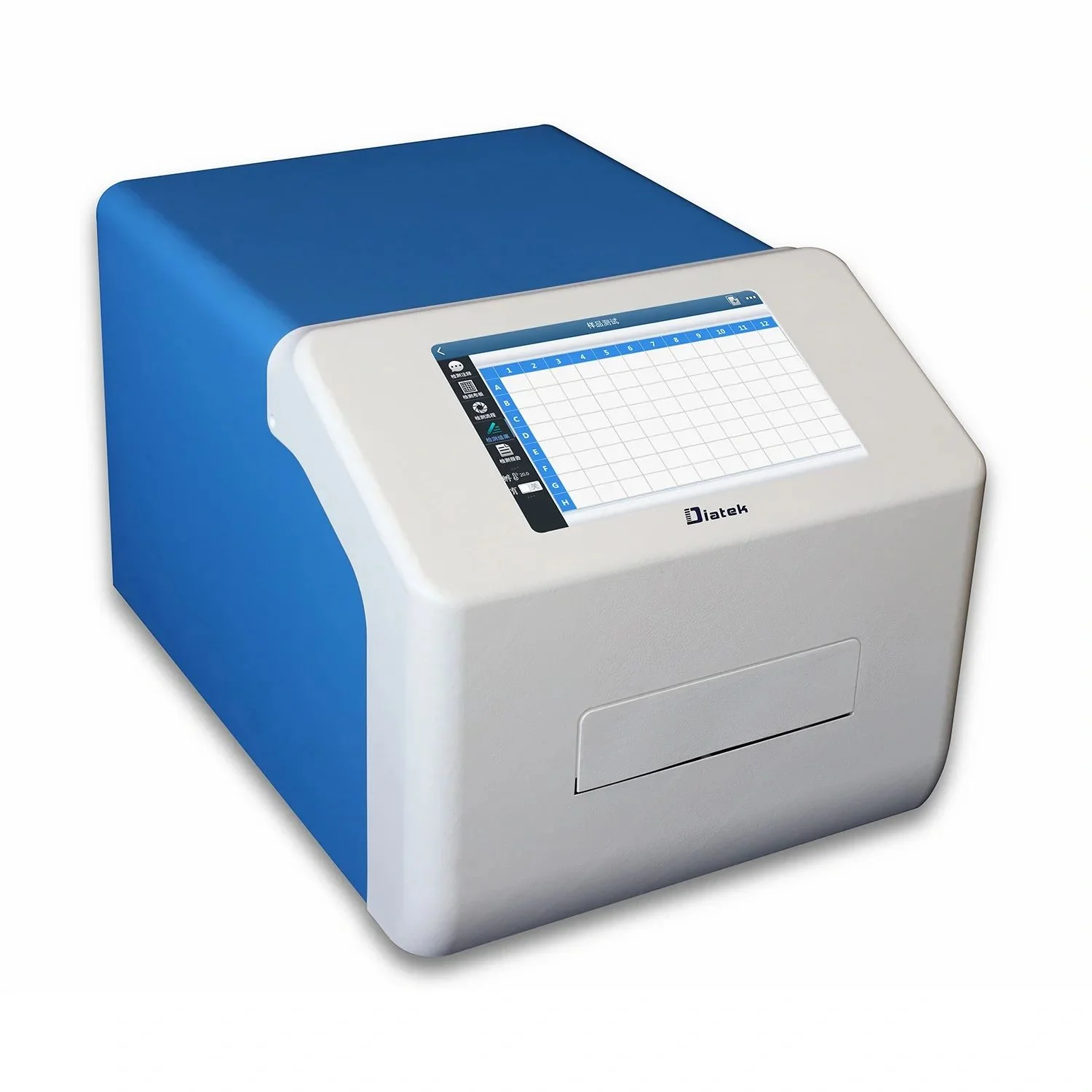Choosing the Right Microplate Reader: Key Features to Consider
In the world of laboratory research, microplate readers are essential tools used for a variety of applications, including biochemical assays, drug discovery, and clinical diagnostics. With the increasing complexity of experiments and the need for high-throughput screening, selecting the right microplate reader can significantly impact your research outcomes. At DIATEK, we provide advanced microplate readers like the Full Wavelength Microplate Reader DR-5000, designed to meet diverse laboratory needs. This blog will explore key features to consider when choosing a microplate reader and how our products can enhance your laboratory operations.

1. Wavelength Range
One of the most critical features of a microplate reader is its wavelength range. The DR-5000 offers a broad wavelength range from 190 nm to 1100 nm, making it suitable for various assays, including UV-Vis applications. A wider wavelength range allows researchers to conduct multiple types of experiments without needing different instruments, thereby saving time and resources.
2. Tuneable Wavelength Options
Flexibility is essential in many laboratory settings. The DR-5000 provides tuneable wavelength options, allowing users to select specific wavelengths for their assays. This feature is particularly beneficial for experiments that require precise measurements at specific wavelengths, enhancing the accuracy and reliability of results.
3. User-Friendly Interface
The user interface of a microplate reader can greatly affect its usability. The DR-5000 features an Android operating system with a 10.1" high-resolution LCD screen, making it easy to navigate through settings and protocols. A user-friendly interface reduces training time for new users and increases overall efficiency in the lab.
4. Automatic Plate Handling
An automatic open/close plate drawer is another valuable feature of modern microplate readers. This functionality eliminates the need for manual intervention when loading or unloading plates, reducing the risk of contamination and improving workflow efficiency in busy laboratories.
5. Built-in Incubation Module
Temperature control is crucial for many biochemical reactions. The DR-5000 includes a built-in incubation module that allows for temperature settings ranging from room temperature (RT) +4°C to 45°C. This feature is essential for assays that require specific temperature conditions to ensure optimal reaction rates and accurate results.
6. Reading Range and Sensitivity
The reading range and sensitivity of a microplate reader determine its ability to detect low concentrations of analytes accurately. The DR-5000 has a reading range of 0.000 to 4.000 OD with an absorbance accuracy of ≤±0.005A and stability of ≤±0.002Abs. High sensitivity ensures reliable detection in assays with low signal levels, making it suitable for various applications.
7. Data Analysis Capabilities
Advanced data analysis capabilities are essential for interpreting results effectively. The DR-5000 comes equipped with software that allows users to perform complex data analyses, including curve fitting, statistical analysis, and reporting features. Look for a microplate reader that offers robust data management options to streamline your research processes.
8. Connectivity Options
In today’s digital age, connectivity features are increasingly important for integrating laboratory instruments with other systems or networks. The DR-5000 includes USB-A and USB-B ports for easy data transfer and connectivity with computers or laboratory information management systems (LIMS). Ensure that your chosen microplate reader has adequate connectivity options to facilitate seamless integration into your lab setup.
9. Maintenance and Support
Regular maintenance is vital for ensuring the longevity and accuracy of any laboratory equipment, including microplate readers. Choose a manufacturer like DIATEK that offers comprehensive support services, including training, troubleshooting assistance, and maintenance plans to keep your equipment running smoothly.
10. Cost Considerations
Finally, consider your budget when selecting a microplate reader. While it may be tempting to opt for the cheapest option available, investing in a high-quality instrument like the DR-5000 can save costs in the long run through increased efficiency, accuracy, and reliability in your experiments.
Conclusion
Choosing the right microplate reader is crucial for achieving reliable results in your laboratory research. By considering key features such as wavelength range, user interface, automatic handling, built-in incubation, reading range, data analysis capabilities, connectivity options, maintenance support, and cost-effectiveness, you can make an informed decision that meets your specific needs.
At DIATEK, we are dedicated to providing advanced laboratory solutions that enhance research outcomes and streamline workflows. Our Full Wavelength Microplate Reader DR-5000 is designed with cutting-edge technology to meet the demands of modern laboratories.
If you’re interested in learning more about our microplate readers or have specific requirements for your research applications, please reach out! Together, we can find the perfect solution to elevate your laboratory's capabilities and drive scientific innovation forward.
- Art
- Causes
- Crafts
- Dance
- Drinks
- Film
- Fitness
- Food
- Jogos
- Gardening
- Health
- Início
- Literature
- Music
- Networking
- Outro
- Party
- Religion
- Shopping
- Sports
- Theater
- Wellness


